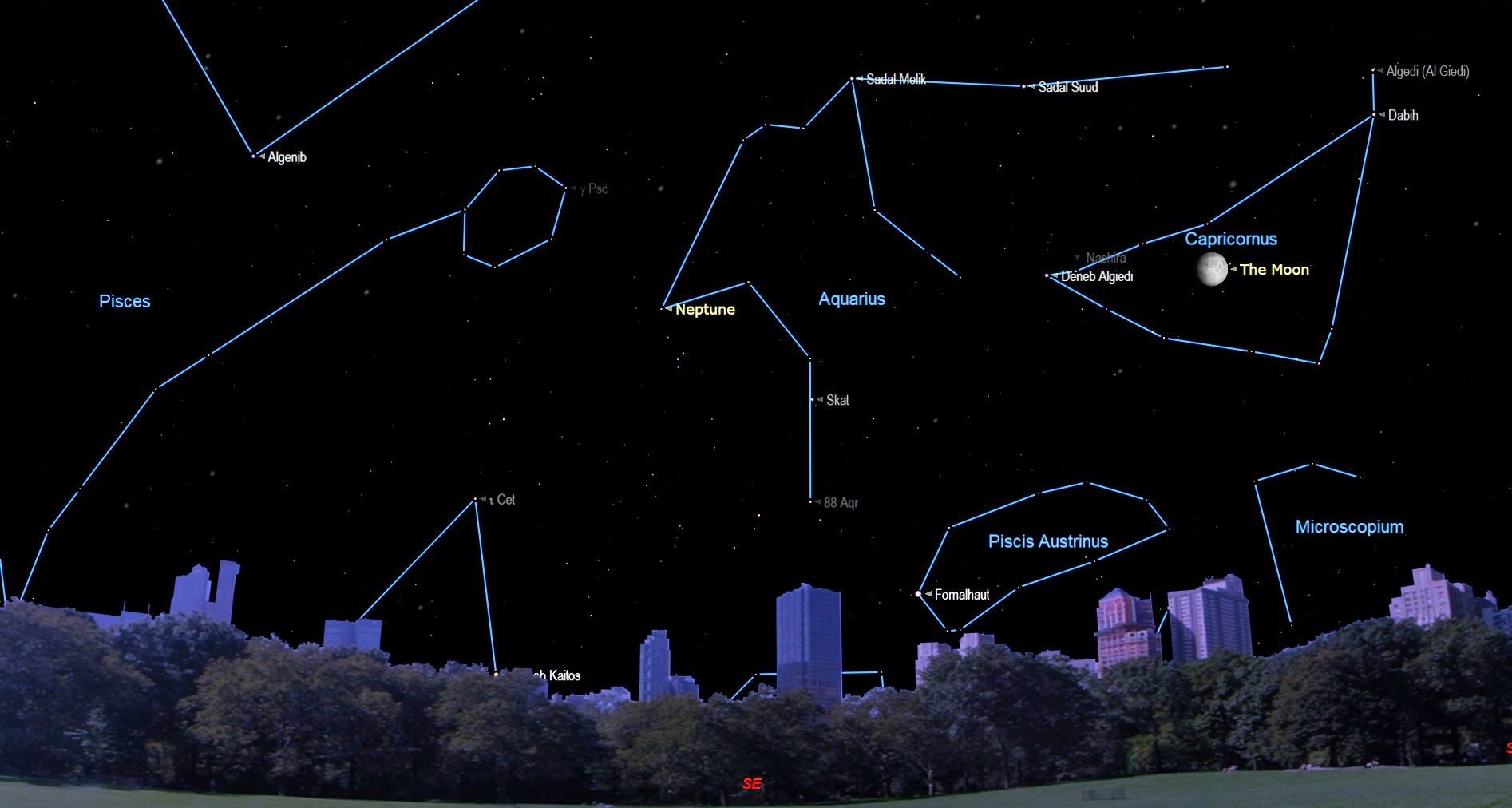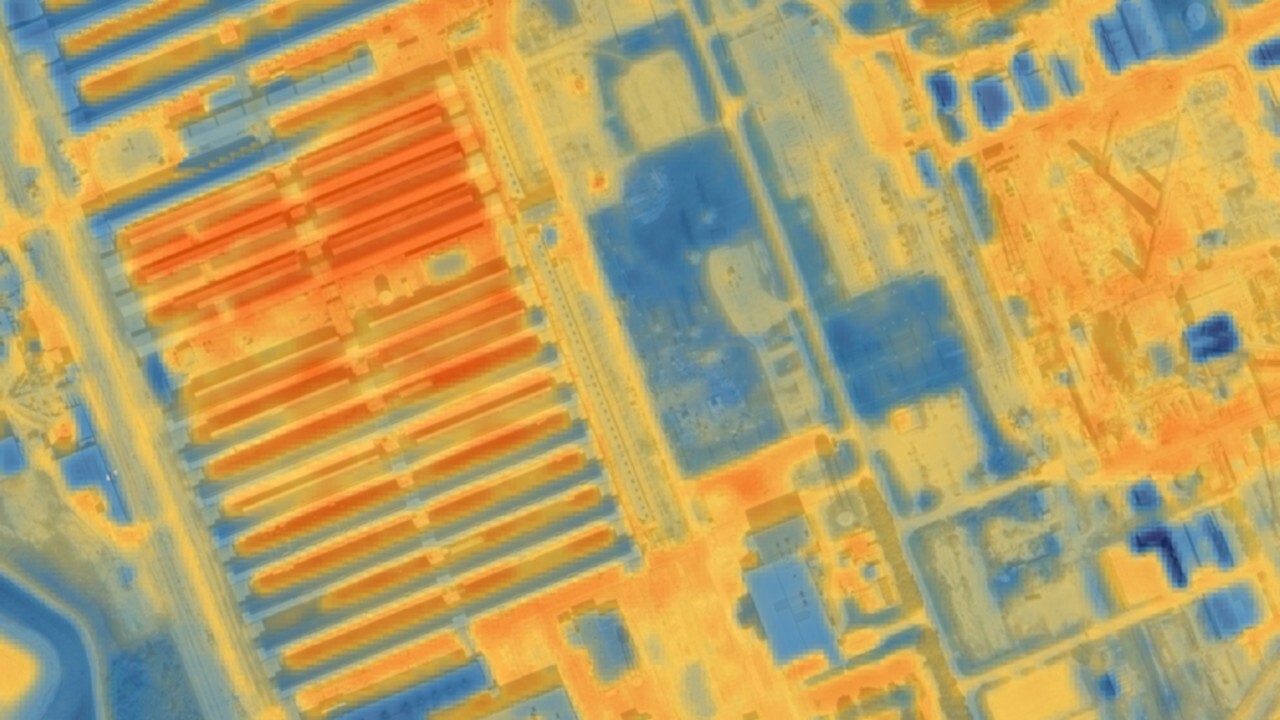Neptune Is at Opposition Today: Here's How to Spot the Distant Planet
Now is the best time to see Neptune in the night sky. (You'll need a telescope.)
This week is a great time to see the solar system's outermost gas giant planet, if you have a telescope and a little patience.
Planet Neptune is almost directly opposite the sun in the sky today (Sept. 10), according to In-The-Sky.org, which means that the planet will be at its highest point in the night sky around midnight at your local time. Neptune will be visible for most of the night in the constellation Aquarius.
Neptune is also bigger and brighter as seen from Earth than any other time of year, thanks to the current cosmic alignment. Yesterday (Sept. 9) the planet passed perigee, or the closest point to Earth in its orbit. And because Neptune is directly opposite the sun in Earth's sky, its Earth-facing side is almost entirely illuminated by sunlight. Much in the same way that our moon has phases, so do the planets, and today we have a "full" Neptune!
Related: The Brightest Visible Planets in September's Night Sky: How to See them (and When)

To find Neptune from the United States, look to the southeast around 10 p.m. local time and find Aquarius. That constellation is a bit below the Great Square of Pegasus. From there, we recommend using a finder chart — such as this free one from astronomical magazine Sky&Telescope — to locate the blue planet. It should be visible all night until just before 4:30 in the morning.
If you're clouded out tonight or otherwise busy, the planet will still be highly visible in the next few weeks. EarthSky.org suggests that you may be able to glimpse the planet in a good set of binoculars, but you will likely have more luck with a telescope. "This world is about five times fainter than the dimmest star that you can see on an inky black night," the website explains. "You'll need binoculars (at least) and a detailed sky chart to see Neptune in front of the constellation Aquarius."
As for what telescope to use, it's possible (but not easy) to spot Neptune in a small, basic telescope. That's because the planet shines just at the threshold of that kind of telescope's capabilities (at around 8.0 magnitude), according to Sky & Telescope. To see the planet's disk, at bare minimum you will need to use a 6-inch telescope at 200 magnification — but Neptune will be harder to see if the sky conditions are bad, or the telescope is not aligned properly.
Breaking space news, the latest updates on rocket launches, skywatching events and more!
Neptune's current distance is about 2.7 billion miles (4.3 billion kilometers) from Earth, according to EarthSky. It's roughly 30 astronomical units, or Earth-sun distances, from the sun.
- Photos of Neptune, The Mysterious Blue Planet
- When, Where and How to See the Planets in the 2019 Night Sky
- Sky Search: How to Find Neptune
Follow Elizabeth Howell on Twitter @howellspace. Follow us on Twitter @Spacedotcom and on Facebook.

Elizabeth Howell (she/her), Ph.D., was a staff writer in the spaceflight channel between 2022 and 2024 specializing in Canadian space news. She was contributing writer for Space.com for 10 years from 2012 to 2024. Elizabeth's reporting includes multiple exclusives with the White House, leading world coverage about a lost-and-found space tomato on the International Space Station, witnessing five human spaceflight launches on two continents, flying parabolic, working inside a spacesuit, and participating in a simulated Mars mission. Her latest book, "Why Am I Taller?" (ECW Press, 2022) is co-written with astronaut Dave Williams.

